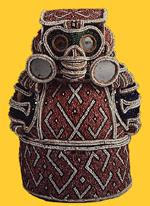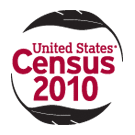WASHINGTON D.C. (UCTP Taino News) – Taíno and other Caribbean Indigenous Peoples were among the thousands of indigenous and non-indigenous peoples gathered to celebrate the grand opening of the Smithsonian's National Museum of the American Indian (NMAI) in Washington, D.C. on Tuesday September 21st.
The United Confederation of Taíno People (UCTP) was represented at this historic event by a delegation of representatives and allies who took part in the Smithsonian’s Native Nations Procession. This awesome symbol of indigenous unity and pride featured about 25,000 of our relatives from th roughout the Western Hemisphere and the Pacific Islands.
roughout the Western Hemisphere and the Pacific Islands.
UCTP Liaison Officers for the State of Washington (from left to right) Evelyn Garcia, Joe Garcia and Adria Garcia in Washington D.C. Members of the UCTP delegation expressed their pride and joy with their tribal relatives who marched together with them in solidarity as Caribbean Indigenous Peoples.
Roger Atihuibancex Hernandez, Chief Editor of The Voice of the Taino People stated “It was an honor to participate with such a large number UCTP reps.
Hundreds of UCTP news journals (The Voice of the Taino People) were distributed to eager persons looking to connect with the indigenous peoples of the Caribbean. UCTP representatives and other family members were interviewed by the press and photographed time and time again as audiences applauded and cheered the Taíno, Carib and Arawak delegation taking part in the Procession.
The new National Museum of the American Indian, Washington, D.C., is located on the National Mall between the Smithsonian’s National Air & Space Museum and the U.S. Capitol Building.
The United Confederation of Taíno People (UCTP) was represented at this historic event by a delegation of representatives and allies who took part in the Smithsonian’s Native Nations Procession. This awesome symbol of indigenous unity and pride featured about 25,000 of our relatives from th
 roughout the Western Hemisphere and the Pacific Islands.
roughout the Western Hemisphere and the Pacific Islands.UCTP Liaison Officers for the State of Washington (from left to right) Evelyn Garcia, Joe Garcia and Adria Garcia in Washington D.C. Members of the UCTP delegation expressed their pride and joy with their tribal relatives who marched together with them in solidarity as Caribbean Indigenous Peoples.
Roger Atihuibancex Hernandez, Chief Editor of The Voice of the Taino People stated “It was an honor to participate with such a large number UCTP reps.
Hundreds of UCTP news journals (The Voice of the Taino People) were distributed to eager persons looking to connect with the indigenous peoples of the Caribbean. UCTP representatives and other family members were interviewed by the press and photographed time and time again as audiences applauded and cheered the Taíno, Carib and Arawak delegation taking part in the Procession.
The new National Museum of the American Indian, Washington, D.C., is located on the National Mall between the Smithsonian’s National Air & Space Museum and the U.S. Capitol Building.









